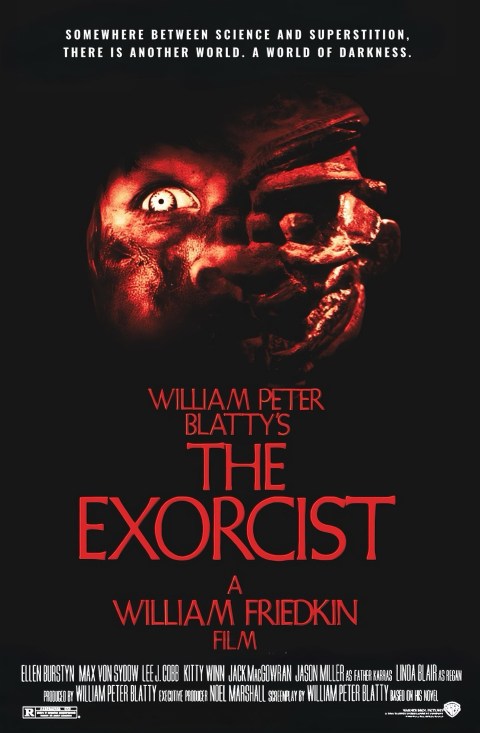17. 4. – 19. 4. 2026
The Exorcist

 Original title: The Exorcist
Original title: The ExorcistDirector: William Friedkin
Production: 1973, USA
Length: 122 min.
Screened:
KRRR! 2010: 70mm 1.85:1, Colours faded, MG, Spoken language: English, Subtitles: CzechKRRR! 2018: 70mm 1.85:1, Colours faded, MG, Spoken language: English, Subtitles: Czech
Annotation for KRRR! 2010
The Exorcist (1973), along with The Omen (1976) and Rosemary's Baby (1968), is one of the most famous films about Satan or the devil. All three films share a common time frame (they were made within eight years) and also the fact that in all three films there are children possessed by demons, but the main characters are adults - the mother of the antichrist in Rosemary's Baby, the father in The Devil Comes Home, and the priest in The Exorcist. Of these three films, only in The Exorcist does the main character not save his own child. He is not connected to the "patient" by a family bond, but seeks and saves something more abstract - the lost faith in God. It is also the darkest of the three films. The little girl is saved, but the priest does not regain his faith and dies in the end, as does his older colleague, and in the end it all seems that God is not interested in people. (Isn't that a spoiler?)
The Exorcist is an adaptation of the novel by William P. Blatty, which is based on a true event. In 1949, Blatty entered Georgetown University and in a neighboring town, an exorcism was performed on a fourteen-year-old boy who was supposedly possessed by a devil. Twenty years later, Blatty published a novel that describes this exorcism. A large part of the novel is based on the diary and letters of the priest who conducted the exorcism in 1949, but he did not want to be associated with the book, and Blatty therefore changed the age and gender of the possessed person.
In 1972, Friedkin began filming a film based on this book. Friedkin wanted to set the exorcism process in a real environment. He describes his film as follows: “These are real streets in a real city, with real people living in them, and in a house on the third floor there lives a real twelve-year-old girl who happens to be possessed by a demon.”
This desire for realism led Friedkin to use controversial methods in working with his actors. To make the actors look more frightened, he would shoot in the air or slap them just before the camera was released. There were several situations during filming where actors were injured, but Friedkin did not stop filming, did not provide assistance to the actors, and some of this footage was later included in the film. Friedkin’s methods were not the only controversy surrounding the film. A fire broke out during filming that halted the filmmakers’ work for six weeks, the cause of which was never explained. Nine crew members died during the filming of The Exorcist, an unusually high number for a single film.
Due to these accidents, various religious groups came to the conclusion that the film was cursed and demanded that filming be stopped. This did not happen. Then they tried to limit its screening. They were partially successful. The film could not be shown everywhere. Despite this, it became the second highest-grossing film of 1974. In a documentary about the making of the film, which was made for the 25th anniversary of The Exorcist, William Blatty claims that they tried to make a film that would have a great emotional impact and they did not care whether it was positive or negative. In his words: "We wanted to make a film that would make you feel alive for two hours." Which they succeeded, Max von Sydow recalls how the audience went to see the film to see if it could last. The film became a test of endurance.